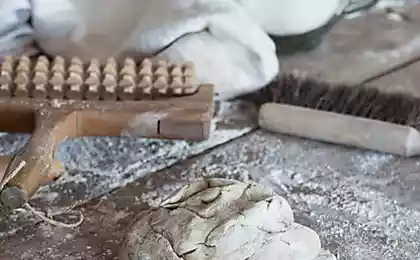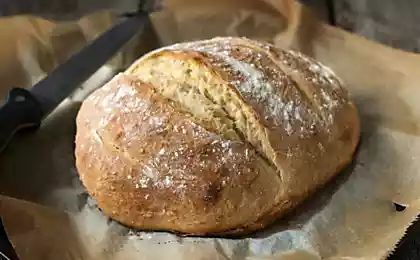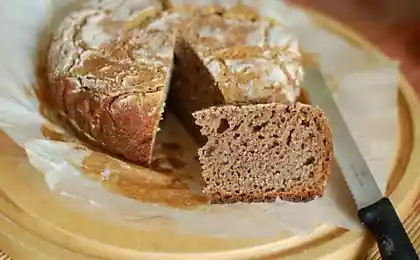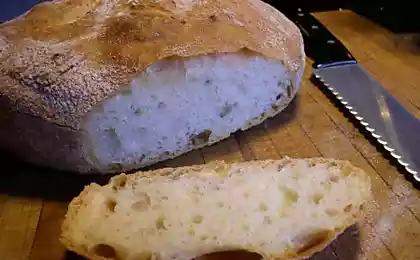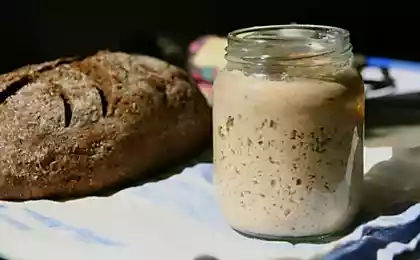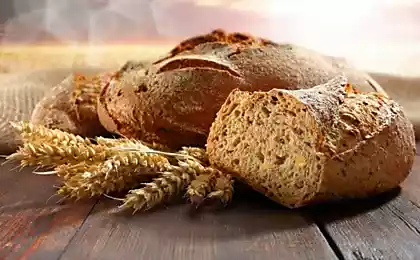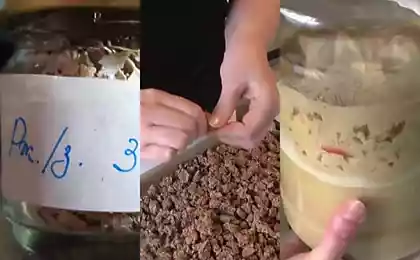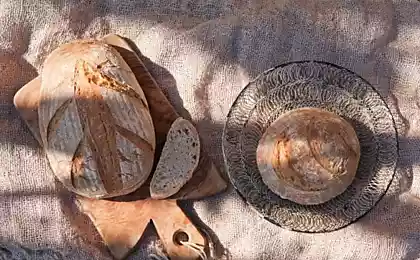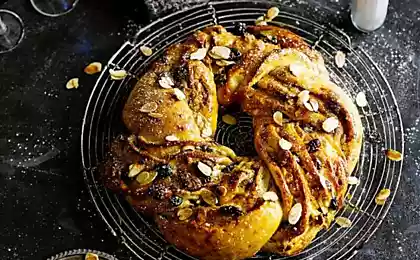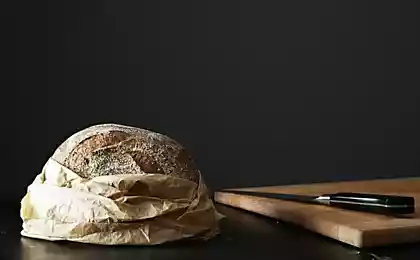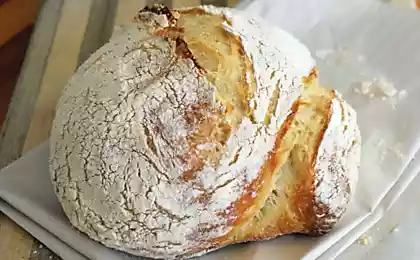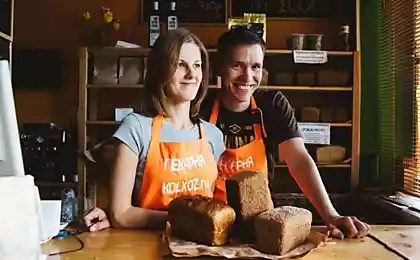536
The bread of the Baltic: a great option daily grey of sourdough!
Baltic bread baked from flour mixture of rye metal buffing and wheat 1C or 2C in the ratio of 70-80/30-20%. It can be baked as hearth and moulded, the loaves weighing about 0.3-0.9 kg, with the addition of cumin. 
This bread is extremely simple to prepare for those who are already familiar with the leaven. However, it is very good! Good in its simplicity and in its flawless quality. We can say that this is another great option daily gray sourdough bread from this book.
The RECIPE (one loaf weighing about 700 grams):
STARTER culture (10-12 hours (overnight) at room temp):
— 8 g – Mature leaven to flour flour VL. 100%;
38 g – flour flour;
— 25 g of water.
OPARA (126g of flour, 88g of water, 3-4 hours at 26-28C):
— 70 g – ferment (all);
— 84 g – flour flour;
— 59 g – water.
The DOUGH (75-100 minutes at 28-30C):
— 213 g – sourdough (whole);
— 275 g flour flour;
— 100 g – wheat flour 1C;
— 9 g – salt;
— yeast instantons on the tip of a knife (I did not add);
— 310-320 g – water for the bottom variant and 330-340g – tin.
Lovers of the taste of caraway seeds in the bread can dobavit in the dough 5 grams of cumin.
Forming or laying in the form. Full proofing of 60-90 minutes. Baking 1 hour (15 minutes at maximum temperature without steam (I have a 250C), to pester with 170S. Drizzle the bread with a spray bottle for a minute before the cake is done baking, allow to cool and rest for 5-8 hours before use.
Some illustrations.
The dough for this bread is nothing other than the necessary quantity of bread thick yeast (126g 88g of flour and water). Since almost no one at home does not store such quantities of dense sourdough, I shared the process of making (savings) to two phases (yeast and sourdough), starting with a basic sourdough with a humidity of 100%.
Of course, anyone will be able to "adjust himself" the timetable for the preparation of the dough, because you know the main thing — the content of flour and water.
From that moment, from the moment of breeding thick yeast (dough) in water and begin my illustration.
The dough (again — in fact, it is a large piece of thick yeast), I always mix with water beaters for whipping. This time I was distracted, and the dough is whipped with the beaters in the cream. I "created" for the first time, but not upset, in the end, it's just a mixture of oxygen, and this test certainly won't hurt.
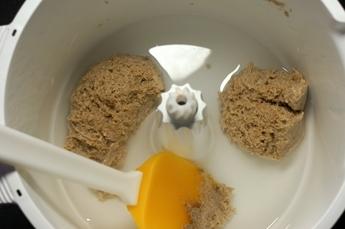
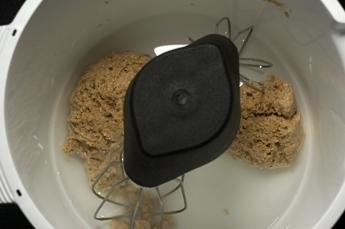
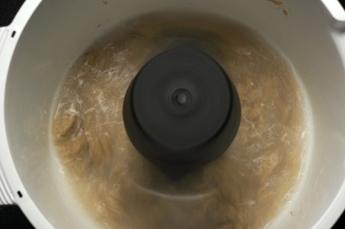

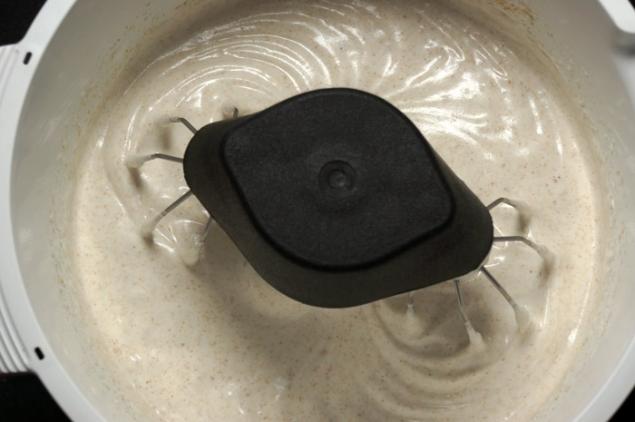
The dough did steel hook. The kneading is short, literally until a homogeneous mass of dough.


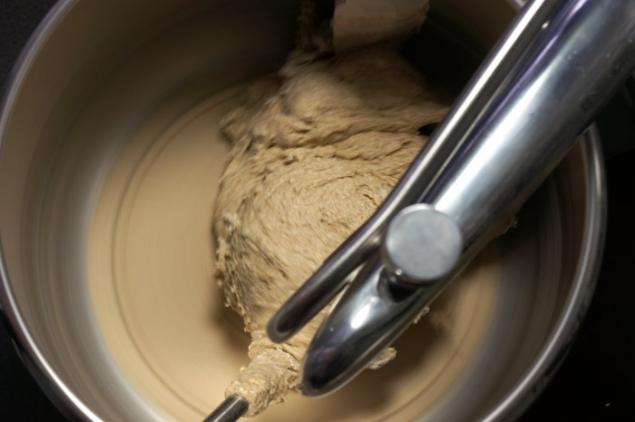
The final degree of fermentation test was conducted directly in the bowl, covered it with tape:
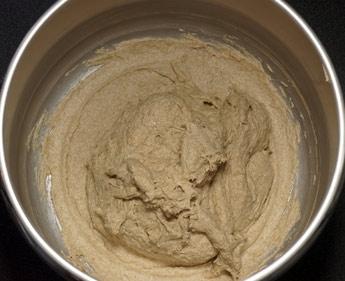
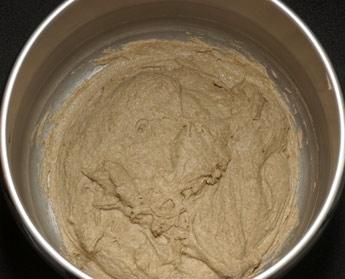
Was restival in the form, covering it with shower cap.
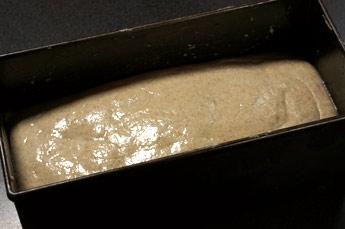
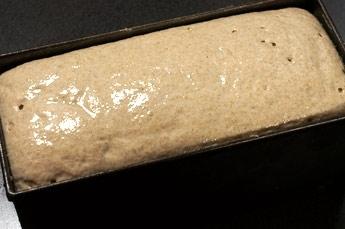
Bread, just out of shape after baking:

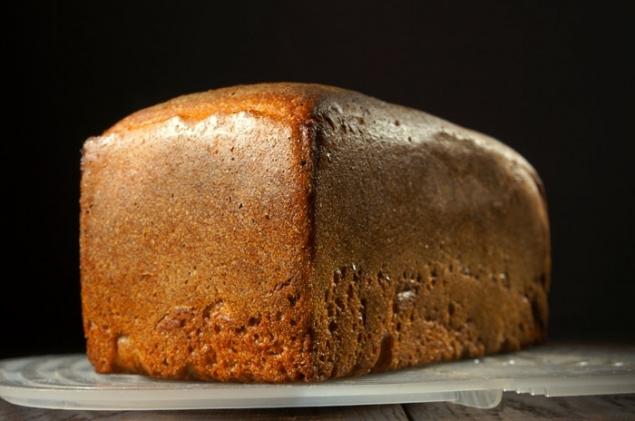
And ready to eat, delicious Baltic breads:

Before the holidays I baked a huge hearth loaf of bread from a double test:
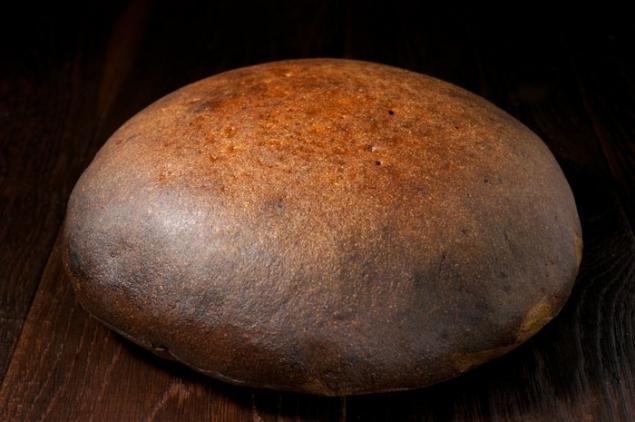
Cases were on the throat, time to follow the bread was not enough, the result is a fine illustration of the defect in the bread — crumb stratification.
The cause of this defect, I suppose, was the lack of time vypaivanija and proofing and proofing the dough at low for a couple degree temperature.
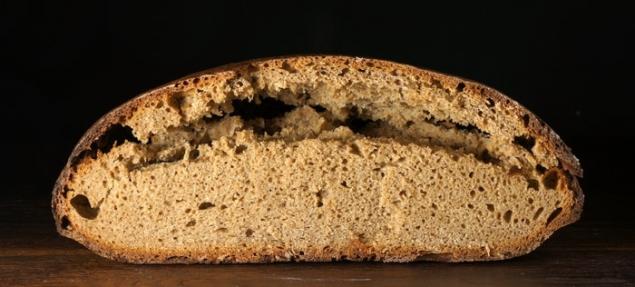
Be careful not to repeat my mistakes and
Good luck with your bread! published
Source: "a COLLECTION of RECIPES AND TECHNOLOGICAL INSTRUCTIONS for preparation of bakery products with use of rye flour.".
A collection of recipes developed by the St. Petersburg branch state research Institute of baking industry, with the participation of L. N. Kazan, A. P. Kosovan and authors in 2000.
P. S. And remember, only by changing their consumption — together we change the world! © Join us at Facebook , Vkontakte, Odnoklassniki
Source: registrr.livejournal.com/tag/%D0%91%D0%B0%D0%BB%D1%82%D0%B8%D0%B9%D1%81%D0%BA%D0%B8%D0%B9%20%D1%85%D0%BB%D0%B5%D0%B1

This bread is extremely simple to prepare for those who are already familiar with the leaven. However, it is very good! Good in its simplicity and in its flawless quality. We can say that this is another great option daily gray sourdough bread from this book.
The RECIPE (one loaf weighing about 700 grams):
STARTER culture (10-12 hours (overnight) at room temp):
— 8 g – Mature leaven to flour flour VL. 100%;
38 g – flour flour;
— 25 g of water.
OPARA (126g of flour, 88g of water, 3-4 hours at 26-28C):
— 70 g – ferment (all);
— 84 g – flour flour;
— 59 g – water.
The DOUGH (75-100 minutes at 28-30C):
— 213 g – sourdough (whole);
— 275 g flour flour;
— 100 g – wheat flour 1C;
— 9 g – salt;
— yeast instantons on the tip of a knife (I did not add);
— 310-320 g – water for the bottom variant and 330-340g – tin.
Lovers of the taste of caraway seeds in the bread can dobavit in the dough 5 grams of cumin.
Forming or laying in the form. Full proofing of 60-90 minutes. Baking 1 hour (15 minutes at maximum temperature without steam (I have a 250C), to pester with 170S. Drizzle the bread with a spray bottle for a minute before the cake is done baking, allow to cool and rest for 5-8 hours before use.
Some illustrations.
The dough for this bread is nothing other than the necessary quantity of bread thick yeast (126g 88g of flour and water). Since almost no one at home does not store such quantities of dense sourdough, I shared the process of making (savings) to two phases (yeast and sourdough), starting with a basic sourdough with a humidity of 100%.
Of course, anyone will be able to "adjust himself" the timetable for the preparation of the dough, because you know the main thing — the content of flour and water.
From that moment, from the moment of breeding thick yeast (dough) in water and begin my illustration.
The dough (again — in fact, it is a large piece of thick yeast), I always mix with water beaters for whipping. This time I was distracted, and the dough is whipped with the beaters in the cream. I "created" for the first time, but not upset, in the end, it's just a mixture of oxygen, and this test certainly won't hurt.





The dough did steel hook. The kneading is short, literally until a homogeneous mass of dough.



The final degree of fermentation test was conducted directly in the bowl, covered it with tape:


Was restival in the form, covering it with shower cap.


Bread, just out of shape after baking:


And ready to eat, delicious Baltic breads:

Before the holidays I baked a huge hearth loaf of bread from a double test:

Cases were on the throat, time to follow the bread was not enough, the result is a fine illustration of the defect in the bread — crumb stratification.
The cause of this defect, I suppose, was the lack of time vypaivanija and proofing and proofing the dough at low for a couple degree temperature.

Be careful not to repeat my mistakes and
Good luck with your bread! published
Source: "a COLLECTION of RECIPES AND TECHNOLOGICAL INSTRUCTIONS for preparation of bakery products with use of rye flour.".
A collection of recipes developed by the St. Petersburg branch state research Institute of baking industry, with the participation of L. N. Kazan, A. P. Kosovan and authors in 2000.
P. S. And remember, only by changing their consumption — together we change the world! © Join us at Facebook , Vkontakte, Odnoklassniki
Source: registrr.livejournal.com/tag/%D0%91%D0%B0%D0%BB%D1%82%D0%B8%D0%B9%D1%81%D0%BA%D0%B8%D0%B9%20%D1%85%D0%BB%D0%B5%D0%B1
Make a bridge lying down every day - you will be beautiful and healthy!
Transient ischemic attack: a harbinger of trouble
